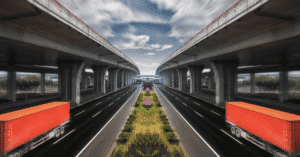Connecticut’s Most Dangerous Roads: A Driver’s Guide to Staying Safe
Connecticut’s scenic roads and highways attract millions of drivers each year, but behind their beauty lies a harsh reality: many of these roads are notorious for car accidents, truck accidents, and motorcycle accidents. At Ventura Law, we see firsthand the devastating impact of these crashes, from serious injuries to life-altering consequences.
If you or a loved one has been in a car accident in Connecticut (CT), knowing which roads pose the greatest risk can help you stay alert and drive safely. In this guide, we’ll highlight Connecticut’s most accident-prone roads, the dangers they pose, and what you can do to protect yourself.
100% FREE first consultation. No obligation. Completely confidential.
CONTACT US TODAYI-95: Connecticut’s Deadliest Highway
- High Speeds: Especially between Stratford and Bridgeport, drivers frequently exceed speed limits.
- Traffic Congestion: Frequent slowdowns increase the risk of rear-end collisions.
- Winter Weather: Snow and ice make driving treacherous.
- Crash Statistics: Between 2018 and 2020, eight fatal crashes occurred on I-95 in Connecticut alone.
100% FREE first consultation. No obligation. Completely confidential.
CONTACT US TODAYI-91: A High-Risk Highway
- Heavy Traffic Volume: Increased congestion leads to more accidents.
- Merging Traffic: Sudden lane changes contribute to crashes.
- Pedestrian Crossings: Especially near Yale University, pedestrian activity adds to risks.
- Crash Statistics: In 2018, I-91 in New Haven recorded 379 accidents, making it one of the most accident-prone roads in the area.
Route 15 (Wilbur Cross Parkway & Merritt Parkway): A Scenic But Hazardous Route
- Tight Curves & Limited Visibility: Winding roads with little room for error.
- No Shoulders: Drivers have nowhere to pull over safely.
- High Accident Rate: In 2018, 263 crashes were reported in New Haven alone.
Route 6: A Deadly Connecticut Road
- Unexpected Curves: Make it difficult to navigate.
- Poor Road Conditions: Potholes and uneven pavement contribute to accidents.
Route 44: Dangerous Curves & Winter Risks
- Sharp Turns: Especially hazardous around Norfolk.
- Winter Conditions: Snow and ice make driving particularly dangerous.
Route 1: A Pedestrian Danger Zone
- No Sidewalks: Pedestrians are forced to walk in traffic.
- Unmarked Crosswalks: Increase the likelihood of pedestrian accidents.
Route 17: A Merging Nightmare
- Difficult Merging Areas: Drivers struggle to safely enter and exit.
- High Traffic Volume: Adds to congestion-related crashes.
SR-10: A High-Risk Stretch in New Haven
- Heavy Foot Traffic: Increases the likelihood of accidents.
- Sudden Lane Shifts: Drivers often change lanes abruptly, leading to crashes.
I-84: A Frustrating & Risky Drive
- Traffic Bottlenecks: Frequent backups increase accident risks.
- Winter Conditions: Snow and ice exacerbate driving hazards.
How to Stay Safe on Connecticut’s Most Dangerous Roads
- Follow Speed Limits: Many of these roads become hazardous due to excessive speeds.
- Drive Defensively: Expect the unexpected from other drivers.
- Avoid Distractions: Keep your focus on the road at all times.
- Plan Your Route: If possible, use alternate roads to avoid high-risk areas.
Hurt in a Car Accident? Call Ventura Law – Available 24/7
Connecticut’s roads can be dangerous, and accidents happen. If you’ve been injured in a car accident, truck accident, or motorcycle accident in CT, Ventura Law is here to fight for your rights.
✅ No Upfront Fees – You pay nothing unless we win.
✅ Free Consultation – Get the legal guidance you need at no cost.
✅ Available 24/7 – Call anytime for immediate assistance.




